Dell Precision M3800 Review
Dell Precision M3800
The best reason not to buy a MacBook Pro
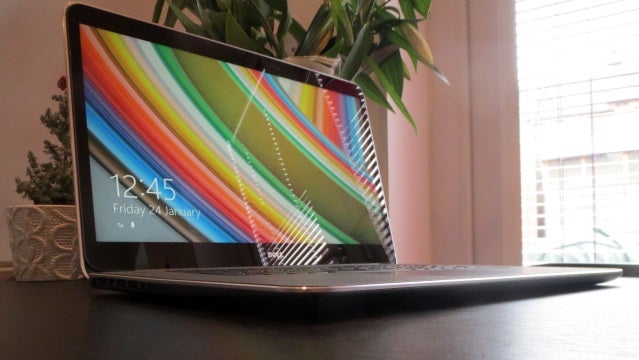
Sections
- Page 1 Dell Precision M3800 Review
- Page 2 Battery Life, Performance, Heat & Noise Review
- Page 3 Keyboard, Trackpad and Verdict Review
Verdict
Pros
- Stunning screen resolution and quality
- Superb slim and light design
- High-end performance
- ISV-certified GPU
Cons
- Middling battery life
- MacBook slightly faster
- A little noisy and warm under heavy load
Key Specifications
- 15.6in, 3,200 x 1,880 resolution IPS touchscreen; Quad-core Haswell Core i7 processor; ISV-certified Nvidia Quadro graphics; 19mm thick; 1.8kg weight; 256GB SSD; 16GB RAM
What is the Dell Precision M3800?
On paper the Dell Precision M3800 has all the qualities of a ‘dream machine’ for anyone who wants serious processing power on the go. Inside it has a top-end Core i7 processor and an Nvidia Quadro graphics core that combine to power a 15.6in IPS screen with a mighty resolution of 3,200 x 1,880. Yet, despite those impressive numbers, the Dell Precision M3800 isn’t a bulky workstation. The M3800 weighs just 1.8kg, is 19mm thick and it looks good, too, thanks to an aluminium and carbon fibre body. All of which leads us to one conclusion, that the Dell Precision M3800 has its sights set on one rival: the 15-inch MacBook Pro with Retina Display.
SEE ALSO: Best Laptops 2014: Find the best laptop for you
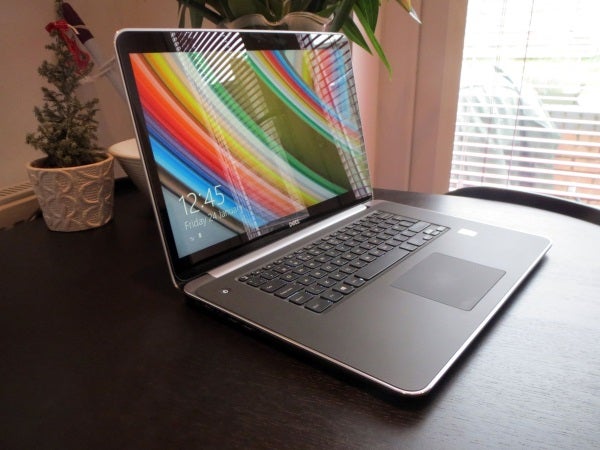
Dell Precision M3800: Design & Build Quality
The Precision M3800’s design has more in common with Dell’s high-end XPS consumer laptops than bulkier workstations: the lid and edges are clad in brushed aluminium, and the interior, base and sides are all finished with soft-touch carbon fibre laid over a strong aluminium frame.
The high-quality materials mesh well with the clean lines and simple curves to make a great-looking laptop, and build quality is impressive. There’s no noticeable give in the wrist-rest, and the base feels similarly sturdy. The screen is a little weaker, and we noticed distortion on the desktop when we prodded its rear, but that’s the only issue – it’s not surprising, given the panel is only 4mm thick. It’s very strong, and only the MacBook Pro is sturdier.
SEE ALSO: Best Windows 8 Laptops and Tablets
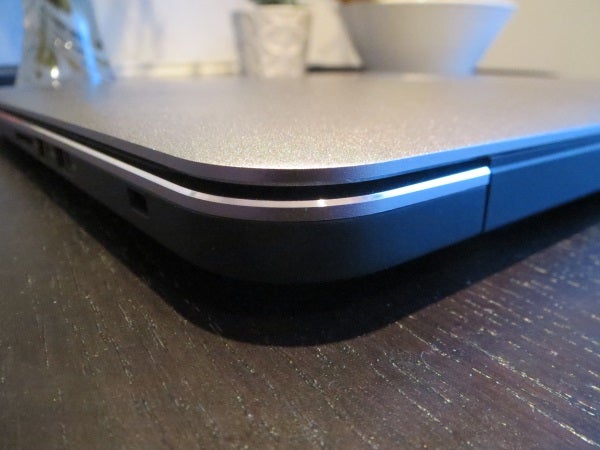
It’s especially impressive given the M3800’s dimensions. Its body is just 17mm thick, with another couple of millimetres only added by feet at the back, so it trades blows with the 18mm MacBook – and at 1.88kg the M3800 is almost 200g lighter.
We like the little details as much as the bigger picture. The five-stage battery indicator on the left-hand edge flashes bright white, the carbon fibre weave coats the base and edges, and the metal logo plate on the base adds class and conceals serial numbers and service tags underneath.
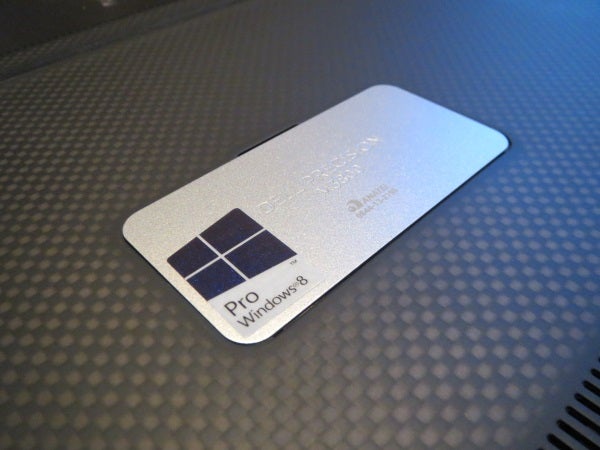
The right-hand side houses single USB 3 and USB 2 ports alongside a card reader, and the left-hand edge serves up two more USB 3 ports, an HDMI output, a headphone jack and a mini-DisplayPort connection.
The only thing missing is Gigabit Ethernet, although a USB adapter is included. Connectivity elsewhere is good, with dual-band 802.11ac wireless a sensible, future-proofed addition alongside Bluetooth 4.0. There’s no room for mobile broadband, perhaps because these slots are usually found beneath removable batteries – a feature the Dell lacks.
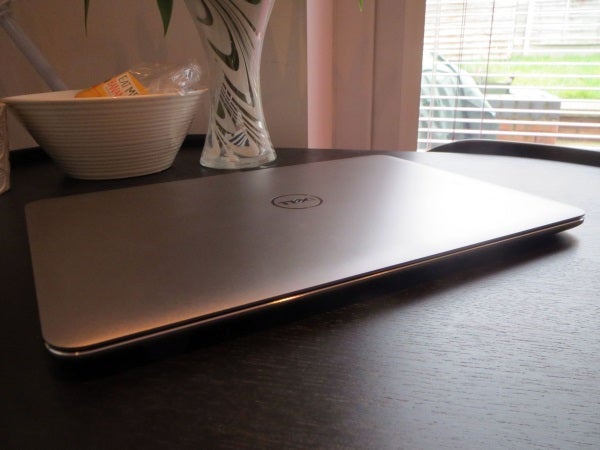
Dell Precision M3800: Screen & Sound Quality
For all of its high-end components and pretty design, the star of this show is the touchscreen. It’s a 15.6in IPS panel with a mighty 3,200 x 1,880 resolution, which means this 237.9ppi screen is denser than its big rival – the Retina MacBook has a resolution of 2,880 x 1,800 across a 15.4in screen for a 220.5ppi. It’s glossy finish but, like the MacBook, the lack of space between the panel and glass means reflections are minimal.
The screen is razor-sharp: Windows 8.1’s Live tiles and its desktop windows are all crisp, and text looks as good as anything a MacBook can offer. Dell employs a similar system to Apple in order to make such a high-resolution display usable, with the taskbar, desktop icons and other OS furniture scaled up to mimic a 1080p panel. Only apps and websites not optimised for this high-pixel panel look poor.
SEE ALSO: Best Laptops for Students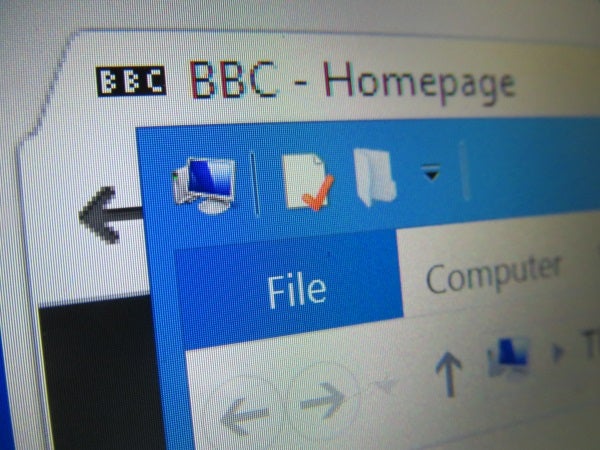
The Precision’s pixels aren’t the only impressive feature of this panel. We tested using an XRite i1 Display colorimeter, and found measured brightness and black levels of 436 nits and 0.39 nits – among the best figures we’ve seen from any notebook. The black level could be a little deeper, but the contrast ratio of 1,131:1 is fantastic, and means inky blacks, bright whites and punchy colours across the whole spectrum.
The measured colour temperature of 6,632K is great, too: a tiny bit cool, but very close to the ideal of 6,500K. The 4.9 DeltaE is reasonable, and the panel covered 92.5% of the sRGB colour gamut – a superb figure for a laptop. That means the screen will capably handle almost all shades with accuracy and brightness; the Dell only fell slightly short on the deepest reds.
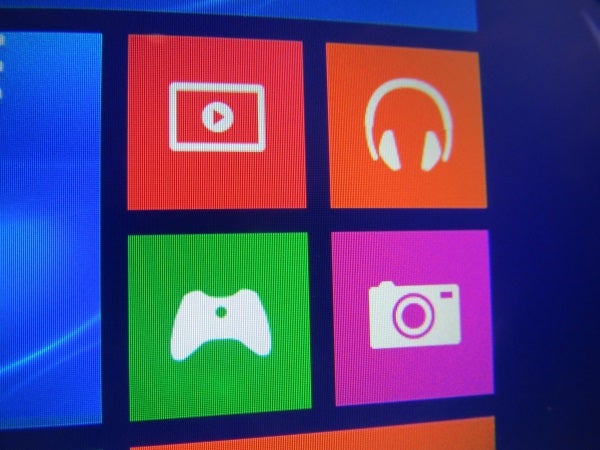
There’s no backlight bleed, viewing angles are good, and the panel is made from sturdy Corning Gorilla Glass. It’s an excellent result for the Precision: its screen has ample brightness and contrast, its colours are accurate, and it’s got a mighty resolution that makes text and images pin-sharp. If you need a screen for demanding work, you’ve come to the right place.
The stunning screen is accompanied by decent speakers. They’re loud enough to fill a room with sound, and balance is good: the high-end is snappy and lively without being overwhelming, and the mid-range is meaty enough to make audio sound suitably impactful. Bass is present, which is more than we can say for many laptops, but it could be stronger.
How we test laptops
Unlike other sites, we test every laptop we review thoroughly over an extended period of time. We use industry standard tests to compare features properly. We’ll always tell you what we find. We never, ever, accept money to review a product.


